5 Client Communication Strategies That Win More Jobs and Referrals
5 Client Communication Strategies That Win More Jobs and Referrals


Establish a Consistent Communication System
Effective client communication is a cornerstone of any successful business, particularly in trades where client trust and satisfaction significantly influence the potential for repeat jobs and referrals. Establishing a consistent communication system is crucial for managing client inquiries efficiently. A reliable method for responding to clients—whether through text messages, emails, or phone calls—can significantly enhance their overall experience.
To create a dependable communication strategy, it is essential to set a clear response timeframe. Clients appreciate knowing when they can expect a reply, which helps to foster trust and improves their satisfaction with your services. For instance, you might decide to respond to emails within 24 hours or acknowledge text messages within the same day. By doing so, clients feel valued and assured that their concerns are prioritized, ultimately leading to a more positive working relationship.
Additionally, developing templates for common inquiries can streamline your communication process immensely. By having pre-drafted responses for frequently asked questions or typical scenarios, tradespeople can respond promptly while maintaining a professional tone. This not only saves time but also ensures that no client feels neglected or overlooked. These templates can be customized as needed but should adhere to a standard format that reflects your brand’s voice and professionalism.
Incorporating a consistent system for communication allows tradespeople to handle inquiries effectively, ensuring that each interaction contributes positively to the client’s experience. This approach not only fosters satisfaction but also positions your business favorably for future job opportunities. By establishing and maintaining these communication strategies, tradespeople can cultivate trust and reliability, leading to a higher likelihood of receiving referrals and repeat business.
Document Everything in Writing
Effective client communication is a cornerstone of any successful business relationship, particularly in the fields of contracting and construction. One of the most critical strategies for ensuring smooth interactions with clients is to document everything in writing. By maintaining a comprehensive record of all communications—ranging from initial quotes to change orders—contractors can create a clear and professional framework for their work. This practice not only safeguards the interests of both parties but also clarifies expectations, thereby minimizing the potential for misunderstandings.
The importance of written documentation cannot be overstated. When all agreements and instructions are recorded, it provides a transparent reference that both the contractor and the client can consult at any time. For example, clearly outlining scope changes in a written format ensures that all stakeholders are on the same page, reducing the likelihood of conflict or dissatisfaction later on. Furthermore, in the rare event of a dispute, having documented evidence of all communications can protect the contractor by demonstrating adherence to agreed-upon terms.
To effectively manage this documentation, contractors should employ systematic strategies. Utilizing project management software can streamline the process of tracking changes and communications, allowing for easy access and retrieval. Additionally, maintaining a formal architecture for documentation—such as using standardized templates for quotes and change orders—can help ensure consistency. Contractors may also consider sending follow-up emails summarizing verbal agreements after meetings, thus reinforcing commitments in writing.
Ultimately, practicing diligent documentation not only enhances transparency but also fosters trust with clients. When clients see that a contractor is committed to keeping a detailed written record of all engagements, it serves to enhance the perception of professionalism and reliability, ultimately winning more jobs and referrals.
Set Clear Expectations from the Start
Establishing clear expectations at the outset of any client project is crucial for fostering a successful working relationship. By defining the project scope, timelines, and associated costs from the very beginning, service providers can significantly reduce the potential for misunderstandings or conflicts down the line. This approach not only sets the stage for a collaborative environment, but it also helps build long-lasting trust between the client and the service provider.
To achieve this, it is essential to engage in open and transparent communication. Begin by outlining the specific objectives of the project and ensure that both parties have a shared understanding of the desired outcomes. By documenting these details in a project brief or proposal, you can create a reference point that both you and the client can revisit throughout the project's duration. This can significantly mitigate any ambiguity regarding roles and responsibilities and provide clarity on deliverables.
Timelines are another critical component of setting expectations. Clearly communicating the project schedule, including key milestones and deadlines, keeps everyone aligned and accountable. It is advisable to incorporate flexibility into the timeline, acknowledging that unexpected challenges can arise. This proactive approach not only demonstrates professionalism but also reassures clients that they can rely on you to adapt as necessary while still prioritizing their needs.
Lastly, discussing costs and payment structures upfront is essential for avoiding financial disputes later on. Present a detailed breakdown of all anticipated expenses and payment terms, ensuring the client is fully aware of what they are investing in. This level of transparency not only enhances client satisfaction but also increases the likelihood of securing future referrals, as satisfied clients are more inclined to recommend your services to others.
Follow Up and Seek Feedback After Projects
Following up with clients after completing a project is an essential communication strategy that can significantly influence future business opportunities. When businesses take the initiative to reach out, they demonstrate a commitment to client satisfaction and an understanding that every project is a collaborative effort. This practice not only strengthens relationships but also provides valuable insights into the client’s experience.
Seeking feedback allows businesses to assess the effectiveness of their services and identify areas for improvement. By asking specific questions about various aspects of the project, such as communication, timeliness, and deliverables, companies can gather pertinent information that directly informs their service enhancements. Moreover, this feedback process illustrates to clients that their opinions are highly valued, fostering a sense of connection and importance.
To effectively request client feedback, businesses should consider drafting a concise follow-up email or conducting a brief phone call. In this communication, it is crucial to express gratitude for the opportunity to work together while also emphasizing the significance of their insights. Using open-ended questions can encourage a more detailed response, providing richer data for future projects. For example, asking clients what they appreciated the most about the collaboration or if there were any aspects they believe could be improved can yield constructive feedback.
Furthermore, implementing a formal feedback system, such as surveys or feedback forms, can streamline this process. By analyzing the feedback collected, businesses can adjust their strategies and address any concerns raised, which ultimately enhances client satisfaction. Additionally, taking visible actions based on client feedback increases trust, potentially leading to repeat business and referrals, essential components for sustained growth.
Overall, strategically following up and seeking client feedback after project completion is a powerful tool for businesses aiming to refine their services and strengthen client relationships.




